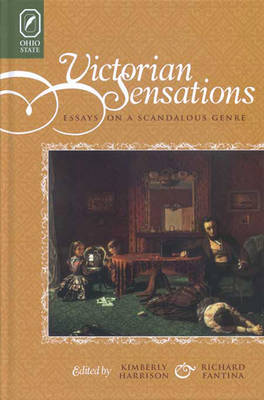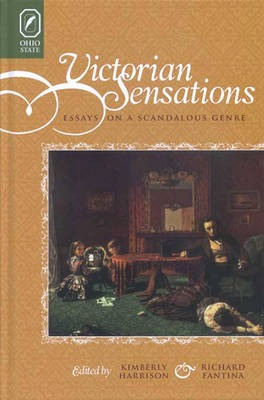
Je cadeautjes zeker op tijd in huis hebben voor de feestdagen? Kom langs in onze winkels en vind het perfecte geschenk!
- Afhalen na 1 uur in een winkel met voorraad
- Gratis thuislevering in België vanaf € 30
- Ruim aanbod met 7 miljoen producten
Je cadeautjes zeker op tijd in huis hebben voor de feestdagen? Kom langs in onze winkels en vind het perfecte geschenk!
- Afhalen na 1 uur in een winkel met voorraad
- Gratis thuislevering in België vanaf € 30
- Ruim aanbod met 7 miljoen producten
Zoeken
€ 60,95
+ 121 punten
Omschrijving
Wildly popular with Victorian readers, sensation fiction was condemned by most critics for scandalous content and formal features that deviated from respectable Victorian realism. Victorian Sensations is the first collection to examine sensation fiction as a whole, showing it to push genre boundaries and resist easy classification. Comprehensive in scope, this collection includes twenty original essays employing various critical approaches to cover a range of topics that will interest many readers. In addition to well-known novels such as The Woman in White by Wilkie Collins and Lady Audley's Secret by Mary Elizabeth Braddon, this volume addresses other works by Collins and Braddon as well as those of Sheridan Le Fanu, Rhoda Broughton, Charles Reade, Ellen (Mrs. Henry) Wood, and perhaps surprisingly, Charles Dickens and Thomas Hardy. Sensation literature, once considered one-dimensionally as a vehicle for contrived, plot-driven stories of mystery and intrigue, is shown here as a multi-faceted formal and ideological hybrid. Essays are organized thematically into three sections: issues of genre; sensational representations of gender and sexuality; and the texts' complex readings of diverse social and cultural phenomena such as class, race, and empire. The introduction reviews critical reception of sensation fiction to situate these new essays within a larger scholarly context. Victorian Sensations aims to further previous efforts to recognize sensation fiction as an integral part of Victorian literature and not as the subgenre that it has too long been considered. The collection's broad scope indicates the breadth and complexity of the genre itself.
Specificaties
Betrokkenen
- Auteur(s):
- Uitgeverij:
Inhoud
- Aantal bladzijden:
- 304
- Taal:
- Engels
Eigenschappen
- Productcode (EAN):
- 9780814252666
- Verschijningsdatum:
- 15/10/2006
- Uitvoering:
- Paperback
- Formaat:
- Trade paperback (VS)
- Afmetingen:
- 152 mm x 229 mm
- Gewicht:
- 449 g

Alleen bij Standaard Boekhandel
+ 121 punten op je klantenkaart van Standaard Boekhandel
Beoordelingen
We publiceren alleen reviews die voldoen aan de voorwaarden voor reviews. Bekijk onze voorwaarden voor reviews.









